The Growth of Greenwood
“Greenwood began fifty years ago when the daily trains on the Columbia and Greenville Road would stop at the town and one of the best meals to be had in the State. Many are the travellers from lower Carolina who remember the little town by the roadside where such fine dinners were to be had. But the schedule of the trains was changed and the dinner station was moved to the famous town of Ninety-Six. So the history of Greenwood was cut short and the town nearly ceased to be, and never was heard of except as the location of a good female school. The time was not yet ripe for Greenwood to show the latent energy within her bounds and to make plain how a few sound-minded, enterprising men could build up a community and set in motion wheels of progress whose velocity increases with time. Greenwood has no history. It is maldng its record in the present, and a record, too, of which it can be proud.
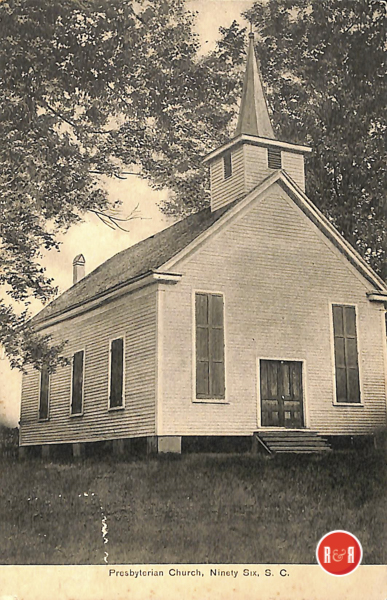
Postcard images of Greenwood Co., S.C. Courtesy of the AFLLC Collection – 2017
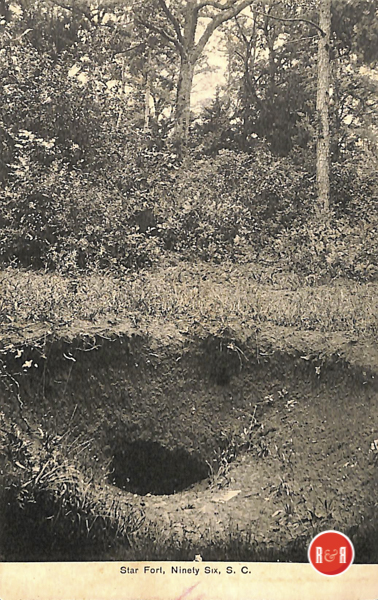
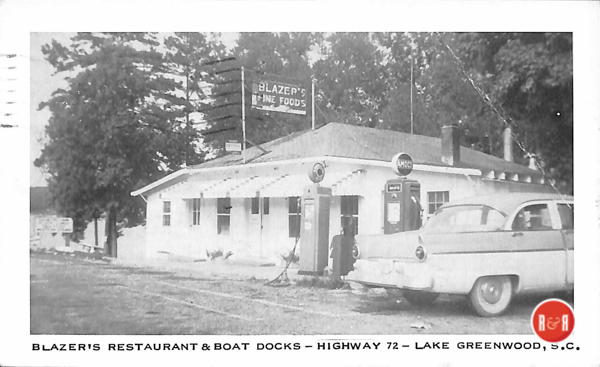
Without any natural advantages, Greenwood is fast becoming one of the busiest markets in South Carolina and is destined to be one of the best distributing points in the upper section of the State. Nature gave health, Greenwood has done and is doing the rest. The town is pre-eminently an example of what can be accomplished by unremitting energy and boundless self-reliance. The Columbia and Greenville
Railroad was diverted from its natural and most direct route on its way from the Capital of the State to the Mountain City and made to circle round to Greenwood by the enterprising efforts of the townspeople. The Augusta and Knoxville Road was built solely by the people of Greenwood and a few of those living along the line. Work was commenced on this road when there was but one thousand dollars subscribed towards the enterprise and it was built to completion amidst the jeers of hundreds. It was at first owned almost entirely by persons in and around Greenwood and was operated by them until it was bought by the Central of Georgia. There never was a road built under such fearful odds and with so little encouragement from outsiders, and yet there are few roads which pass from the possession of the first stockholders with as little loss as did the old Greenwood and Augusta Road.
The next road projected from Greenwood was the “Greenwood and Abbeville, with the privilege to extend either way, east or west.” The charter for it was then altered so as to allow it to run to Chester, and then again to Monroe, N.C., and Atlanta, Ga., where the name was changed and it was known as the Georgia, Carolina, and Northern. It will be one of the best roads in the South, running as it does through a section of country ripe for development. Thus Greenwood has become a railroad centre, well knowing that in our fertile Southland where there were the outlets for traffic that there would spring up very soon a traffic to let out. In the case of Greenwood this has proved itself true. Enterprise after enterprise has been begun. As a cotton market the town has grown till now it far exceeds in wealth and prosperity any town in the State of its own age and has few peers among those of twice or thrice its age.
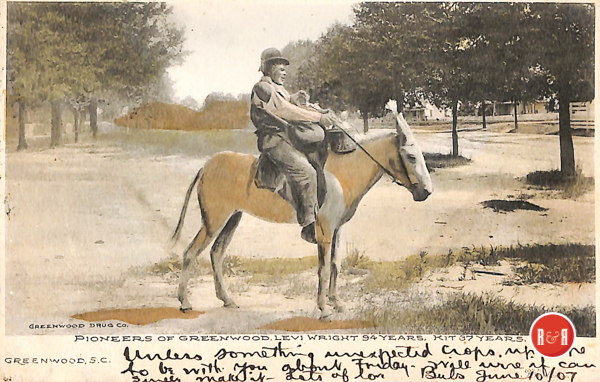
Postcard images of Greenwood County, S.C. Courtesy of the AFLLC Collection – 2017
The town is governed by an intendant and a board of wardens. As the town is, so are its rulers, young and enterprising. Mr. Joel S. Bailey is the intendant and the wardens are: J.W. Duckett, B.R. Calhoun, C.W. Crews, and Lewis Waller (colored). Greenwood is a dry town and needs no peace officers and has only a night watchman. There is a nominal town tax of one and one-half mills.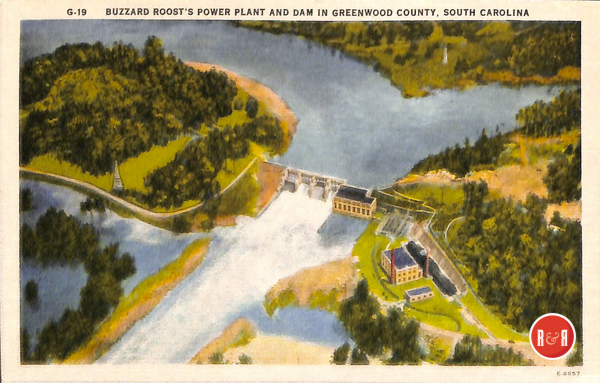
The Greenwood Bank, with a paid in capital stock of $40,000, commenced business on September 15, 1888, and since that time has been doing a thriving business. Last August it declared a dividend of 8 per cent and carried $3,000 to the surplus fund. Its stock is not on the market and cannot be bought except at a very great advance. The business of the bank is increasing rapidly, and it is probable that next year’s dividend will greatly exceed that of this year. The officers of the bank are: J.K. Durst, president; D.A.R Jordan, vice president; J.W. Greene, cashier; J.F. Davis, assistant cashier. The directors are Dr. W.B. Millwee, R.W Majors, H.P. McGhee, H.M. Spikes, and T.C. Duncan.
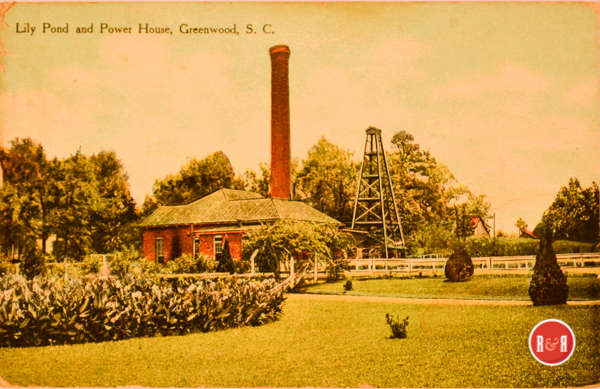
Lily Pond and Power House at Greenwood. Courtesy of the AFLLC Collection – 2018
The Greenwood Cotton Mill will begin work next season. The present capital stock is $100,000, but it is probable that this will be doubled, and the buildings are being constructed with this view. The mill is being built on the co-operative plan, and no money is allowed to lie idle but is called for just as it is needed.
About the mill site the company owns twenty acres of land on which the cottages of the operatives will be built. A side track runs from the mill site to the Richmond and Danville Railroad, which has connection with the Augusta and Knoxville. The mill will make the coarser grades of cotton, and if the Alliance decide to use cotton bagging for another year, machinery for making this article will be put in the mill*
*The Farmers’ Alliance was fighting the “jute trust” at this time, and its members were refusing to use jute bagging for cotton.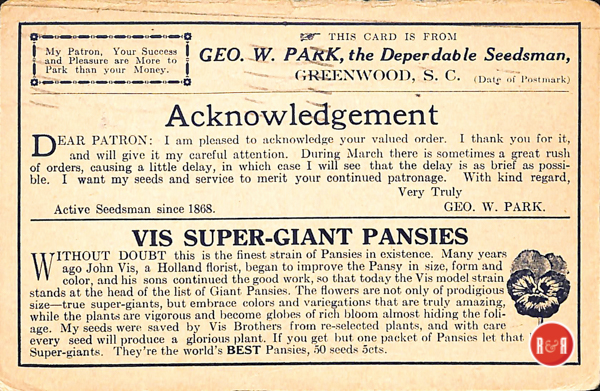
Mr. W.L. Durst, one of the most enterprising men of the town, is the president of the cotton mill company, and Mr. Joel S. Bailey is the secretary and treasurer. The directors are W.L. Durst, Dr. J.C. Maxwell, Dr. W.B. Millwee, G.A. Barksdale, J.T. Simmons, H.P. McGhee, and W.H. Bailey. The cotton seed oil mill was completed a few weeks ago and is now in active operation. ***The Abbeville Press and Banner reported on July 24, 1889 – “Bob Logan, a colored contractor, has the contract for the brickwork at the cotton oil mill.” It is a twenty-ton mill with a capital stock of $30,000. It is conveniently situated to the railroads. The mill is one of the best constructed small mills in the State, and has been so pronounced by experts. The Smith-Vail machinery with Carver linters are the kind used in it, and the most careful attention has been given its construction and equipment by its president, Dr. W.B. Millwee. The directors of the company are Dr. W.B. Millwee, Dr. J.C. Maxwell, J.T. Simmons, J.P Mickler, J.S. Morse, T.F. Riley, and H.B. Reynolds. The only cotton compress in the State outside of Charleston and Columbia is in Greenwood. A company of capitalists have put it here, after critically examining the whole State for a favorable location. It is situated near the side track to the cotton mill and convenient to the three railroads.
Messrs. Johnson and Wilkerson of North Carolina have been operating a door, blind, and sash factory for the past two years, but so far have not been able to do more than satisfy the local patronage, which, however, has been considerable owing to the number of buildings being put up in Greenwood. Messrs. Giles L. Wilson and R.B. Wilson of Gastonia, N.C., graduates of Wofford and of Erskine, respectively, began last year the Greenwood Male High School. They are both young men of talent and energy and are founding a school which will honor them and the town. The school is receiving patronage from Abbeville and neighboring counties and bids fair to be one of the best high schools in this part of the State.
The Rock Hill Herald reported on April 7, 1881 – “The Methodist at Hodges have determined to build a new church in that town. It will cost $1,500.”
The Rock Hill Herald later reported on Dec. 14, 1882 – “Mr. A.F. Cavert of Hodges had his barn burned.”
The Anderson Intelligencer reported on May 1, 1884 – “The grading is completed on the Greenwood, Laurens and Spartanburg Railroad. One section of rock must be removed and then the road will be ready for crossties and iron.”
The Misses Giles have under their charges a very flourishing female school located at Greenwood. Their school has been in successful operation for some years past and it is yet on the gain. The Misses Giles are highly accomplished ladies and are devoted to their profession. The Female school is one of Greenwood’s most prized institutions and is very generously patronized.
Since last May the Presbyterian Company, formerly of Due West, has been located here. They publish the Associate Reformed Presbyterian, the official organ of the church of that name, the Little Banner, and the Greenwood Times, and have very successfully conducted a general publishing business. The Associate Reformed Presbyterian and Little Banner have been bought by a company at Due West and will be published at that place after June 1,1880. The Times will not be published longer by its present owners, but it is probable that others will continue to do so.
Messrs. Mays & Weeks, contractors, are making large quantities of brick from clay, of which there is abundance in the vicinity of the town. The brick made have been pronounced to be of superior quality, and the industry is growing. They have not been able to supply the demand for brick which has come from all sections. There are only three churches in Greenwood, Presbyterian, Methodist, and Baptist. This is due to the youth of the town and not sufficient time for other denominations to occupy the field. Each church has a large number of members, and services are always well attended. It will not be long before other denominations will come in, as the members of other churches are rapidly increasing in numbers.
While Greenwood is a remarkably healthy town, free from malaria and on a high ridge, with a climate strikingly like Aiken, there are a number of physicians here, most of whom, however, have other sources of livelihood besides their profession. The doctors are: J.C. Maxwell, G.P. Neel, S.L. Swygert, W.L. Hood, M.C. Taggart, J.B. Huey, and B.W. Cobb. This is the only profession in Greenwood that can lay claim to being crowded. For the size of Greenwood there are very few lawyers, due no doubt to its not being a county seat. The lawyers are W.K. Blake, who is also a trial justice, E.S.F. Giles, and F.H. McMaster. Dr. M.A. Bailey is the only dentist. He is a rising young practitioner, who is thoroughly master of his art.
Every traveler in the State has stopped at Riley’s Hotel, which has made for itself the same reputation that was once given to the dinner house located here. Mr. J.F. Riley is the genial proprietor of the hotel and he has done as much as any other man in Greenwood to make the town what it is. He keeps a fine hotel and it is a famous “lay over” for commercial travelers. There are a large number of boarding houses in the town where the accommodations are good and the rates very cheap.
The merchants of Greenwood are doing a fine business, both wholesale and retail, and their thrift and enterprise would do justice to a place of much more note. As will be seen, the merchants are all young and have not been in business long. Prominent in every business enterprise and in all things to advance the interests of Greenwood are the Dursts, J.K. and W.L., two brothers from Edgefield, who began business here in September 1884. The firm is known as J.K. Durst & Co. and is composed of J.K. Durst, W.L. Durst, and S.P. Matthews, three as fine business men as one often meets. They have two large stores in Greenwood and do a wholesale and retail trade in groceries, dry goods, clothing, notions, and millinery. Their territory is not confined to Abbeville, but extends into neighboring counties. Eor the fiscal year ending July 31,1889, this firm did business of $142,321.28.
The firm of Bailey, Barksdale & Co., composed of G. A. Barksdale and Joel S. Bailey, is one of the oldest and most substantial in Greenwood. They began business in 1875 and have since that time done a very large business. They have two stores and do a wholesale and retail business in groceries and general merchandise. They have a well-established trade and are widely known for their fine business qualifications. Mr. J.W. Duckett began business in October 1888 and named his store the New York Store. He deals in dry goods, shoes, and notions, and there is no more thriving business in the town than his. A young man, quiet in demeanor, he has established a growing trade of which he may be proud. His sales during the year of 1889 so far have averaged $5,000 a month.
Mr. A. Rosenberg is a young man who began business in Greenwood in the fall of 1888. He is doing a large business and his store is continually filled with customers. He carries a $35,000 stock of dry goods and since his coming to Greenwood has made much money. His business is increasing daily and Mr. Rosenberg is happy that his lot fell in Greenwood.
Jervey & Co. is composed of Eugene P. Jervey, Lewis S. Jervey, and Robert S. Sparkman. The first two named are well-known merchants of Charleston, and Mr. Sparkman is the manager here. They are dealers in farmers’ supplies, cotton, and rice. The firm is doing a thriving business in supplies and is the wholesale dealer in rice for the up-country, besides handling much cotton every season. Messrs. A. St. Clair Lee and W.R. Bailey deal in drugs, paints, and oils and in the summer time wholesale and retail ice to the trade in this section. They own one of the few granite-front buildings in this part of the State and are doing a prosperous business. They commenced business in 1884.
F. F. Dunbar & Co. is composed of F.F. Dunbar and Idis Brabham, both of Hattieville, Barnwell County. They commenced business here this fall and are well pleased with their success so far and with the prospects ahead. They deal in general merchandise.
Greenwood boasts of the finest carriage emporium in the State outside of Charleston. It is owned by J.T. Simmons, who began business here in January 1883. The repository is a two-story brick building 30 by 120 feet and most carefully constructed. Mr. Simmons has on hand always a stock of vehicles that fills both floors of his repository and a large ware house besides. He has a branch establishment at Lowndesville and at Mount Carmel.
Other business houses include Blythe & Wells, furniture dealers and undertakers; J.C. Sproles, stoves, tinware, and roofing; Calhoun Bros., groceries; D.C. Du Pre, drugs, paints, oils, and stationery; Lee & Hodges, insurance and fertilizers; W.C. Strawhome, general merchandise; J.C. Nichels, confectionery and general merchandise; J.T. Youngblood, general merchandise; J.W. Greene & Co., general merchandise; A. McD. Singleton, fancy groceries; B.W. Cobb, drugs; P.B. Reynolds, general merchandise; J.S. Cummings, groceries and building materials; Hartzog & Hays, livestock, horses, and mules; and DJ. Rabon, general merchandise.
The Yorkville Enquirer reported on Aug. 16, 1883 – “W.J. Carr from Hamburg was attempting to rob the store of Bailey, Barksdale and Co., in Greenwood and was shot in the arm by J.S. Bailey.”
Thus, as briefly as possible, is given an account of what is to be found at Greenwood, which is undoubtedly one of the most progressive towns in South Carolina. Besides the enterprises set forth are some of minor importance. There are two building and loan associations, through whose workings a number of the homes in the town have been built. They are still in successful operation. With a fair soil and unexcelled climate Greenwood, with her railroad facilities and the other enterprises that are to be found in the town, bids fair to be a city at no very distant day. It offers many advantages to young men and capitalists. There is no place in the State where an artisan has better opportunities for success. Its people are hospitable and progressive. It extends a welcome to all who may come to it.”
Reprinted from South Carolina in the 1880s: A Gazetteer by J.H. Moore, Sandlapper Publishing Company – 1989
Stay Connected
Explore history, houses, and stories across S.C. Your membership provides you with updates on regional topics, information on historic research, preservation, and monthly feature articles. But remember R&R wants to hear from you and assist in preserving your own family genealogy and memorabilia.
Visit the Southern Queries – Forum to receive assistance in answering questions, discuss genealogy, and enjoy exploring preservation topics with other members. Also listed are several history and genealogical researchers for hire.
User comments welcome — post at the bottom of this page.
Please enjoy this structure and all those listed in Roots and Recall. But remember each is private property. So view them from a distance or from a public area such as the sidewalk or public road.
Do you have information to share and preserve? Family, school, church, or other older photos and stories are welcome. Send them digitally through the “Share Your Story” link, so they too might be posted on Roots and Recall.
Thanks!

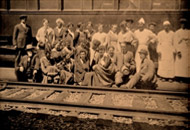
Share Your Comments & Feedback: